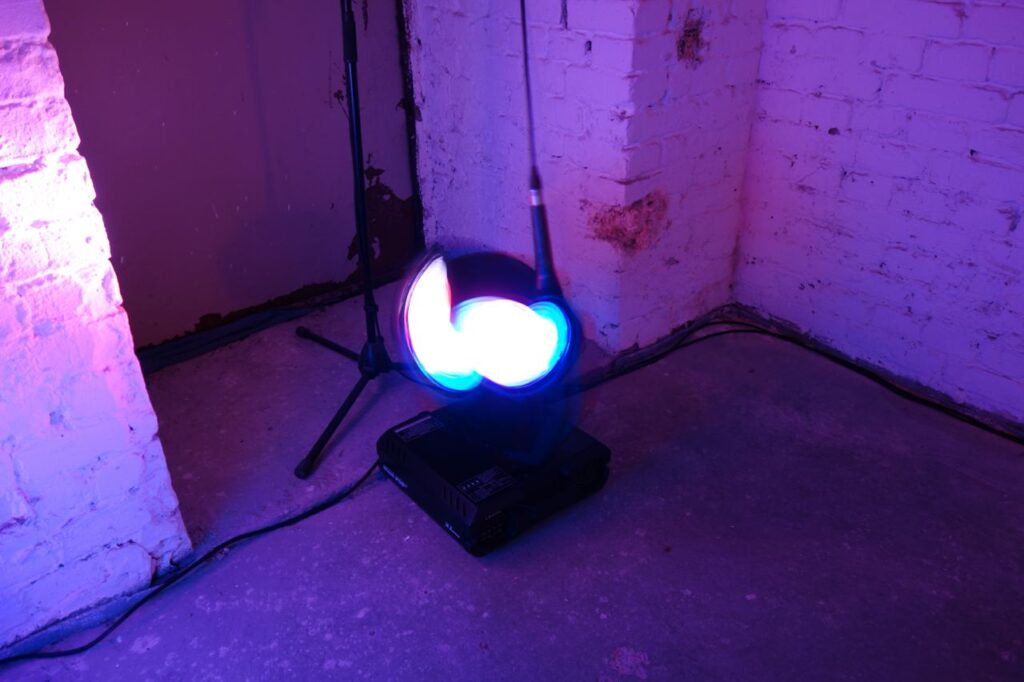20 Jan
Transmediale Studio
silent green
Gerichtstr. 35
13347 Berlin

Children Have The Right To Noise (Remix) by Eldar Tagi
Children Have The Right To Noise is a name of an audio paper that explores the potential of extemporaneous sonic practices for navigating complex relationships between individual agency, and external power. The work attempts to investigate the patterns of self-organization that emerge from a spontaneous action involving sound.
The content of the original audio paper contains recordings that symbolically fall into one of two categories: preparation and performance. The ‘performance’ category includes the recordings made exclusively during an instrument/noise-making workshop with a group of Ukrainian refugee children at Marina Naprushkina’s Neue Nachbarschaft // Moabit—a functionally elastic cultural hub with a strong focus on social activism, and non-hierarchical organizational structure.
Recordings that symbolize the ‘preparations’ category are personal archives of audio captured during one of the first anti-war protests that happened in Berlin in March 2022, a politically-charged conversation between family members, and recordings of the pre-workshop groundwork that have been made a day before the event—these contain a sonified process of selection of sound material, as well as Russian, German, and American radio broadcasts incidentally caught in the background.
The ‘remix’ attachment to the name here indicates a readaptation of the work for a new environment. Redistributed throughout the space, the sounds are radiating from objects that epitomize childhood like nothing else—toys. This visual element is primarily an added layer to somehow establish a mark of the presence of the workshop participants.
The narrative of the piece is not linear and often juxtaposes different timelines in relation to the same event. The rhythms of the protests echo in the chaotic soundscape of children exploring noises in surrounding objects, and occasionally someone clearly expresses an association of certain sounds with a missile or a gunshot. At times loosely in sync, the group unites in a blissful cacophony. Seemingly chaotic, this form of improvised disharmony can be viewed as a form of communal synchronization where the most important aspect remains not in the uniformity of rhythms but in the simple fact of being and engaging with each other. It is uneasy listening, but it is optimistic. After all, children have the right to make their own kind of noise.
About the Artist:
Eldar Tagi is an artist whose practice, in one way or the other, always revolves around sound. A predominant feature of Tagi’s practice is live improvised performances which can incorporate anything from computers and field recordings to analog modular synthesizers, and electro-acoustic instruments such as daxophone, guitars, and other stringed instruments, as well as found objects and self-made sound-makers.
Website: https://www.eldartagi.com/

Vacuum Conversation by Haesoo Eshu Jung
Installation of interactive sound and light objects. The action-reaction relation creates a feedback loop between how sound and light behaviours.
About the Artist:
Haesoo Eshu Jung (she-her) is a sound artist and designer based in Berlin(DE) and Seoul(KR). Coming from a background of Social Studies and Journalism, Jung takes great interest in magnifying individual human lives to universes of their own. Jung explores everyday rituals and tradition of acts in modern society, and her focus on communal sonic experiences and rituals revolves around spatial acoustics, performativity and sensory transcendence of cultural, social, political and personal perspectives.
Website: https://junghaesoo.com/